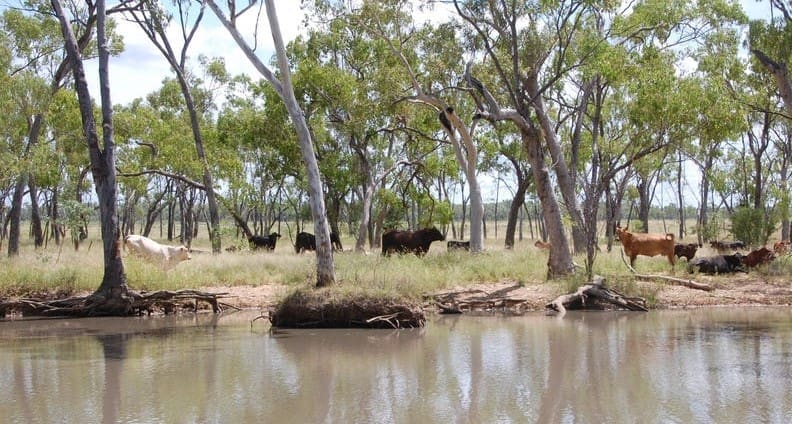
Last month, Pentland’s Carmichael Station owned by Hewitt Pastoral Enterprises sold to a local family operation for more than $11 million bare ($512/ha).
IT appears there is no black-and-white, right-or-wrong, when it comes to the potential benefits and downsides of selling a grazing property with or without livestock, in the current market conditions.
In today’s current strong property market, the inclusion of stock is more frequently being negotiated after an auction or a sale price has been settled for the land and improvements.
Generally, a rule of thumb is that lighter breeding country in northern Australia is best sold stocked, while higher breeding blocks in the south are more typically offered bare.
Herron Todd White director for north and northwest Queensland, Roger Hill said northern forest breeding properties are in his opinion best sold stocked.
“It is lighter production country and cows need to be settled and cycling in their own territory. There have been some instances where people have purchased unstocked breeding country and subsequently stocked it, however it is rare to see a northern forest breeding property sell bare.”
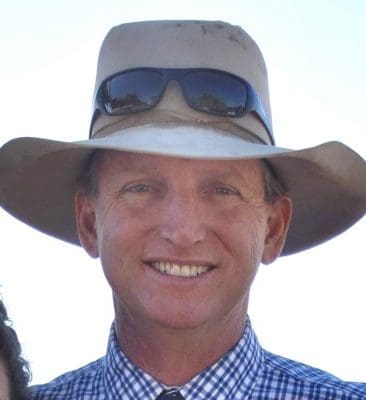
Roger Hill
In comparison, Mr Hill said higher production country is often sold bare.
“When producers are chasing grass, they usually don’t want cattle. Grazing properties in central and southern Queensland featuring Mitchell grass downs or buffel (where cattle are often finished) are more suited to depot style production.”
Mr Hill believes some cattle left in the deal can be good for ‘greasing the wheel.’
“Some cattle included can certainly a drawcard for marketability. A mob of young steers, cattle that haven’t been mustered, last year’s weaners, or calves to brand can provide an initial cash flow in that first year or two of business, for the new owner.”
Mr Hill said there were several reasons why vendors may be offering lower cattle numbers with their properties.
“In this phase of the market, cattle numbers may be down due to the smaller inventory from the drought years, as well as the strong prices. It may also be the reason why more places are being offered bare.”
“Graziers are savvy, and avoid selling down too harshly despite the prices. You don’t want to sell the goose that lays the golden egg if you can avoid it,” he said.
Mr Hill said a good deal always left something on the table for the next person.
“Looking at the year ahead, particularly with rising interest rates, cattle may be a handy option to offer when selling a property, because they create an immediate cash flow for the incoming buyer.”
“In fact, several vendors I have spoken to recently have recognised the stormy horizon, and as a result have entered into good negotiations with interested parties.”
He said buyers did not want their hands held when purchasing a new property, but some cashflow potential could be perceived more favourably by banks and financial institutions.
“It is important to get off to a good start, because the biggest threat to any incoming purchaser is the first two to three years. Some steers or dry cows to fatten and sell can help offset any potential setbacks or challenges.”
“Producers who expand now and don’t lower their risk could have trouble recovering, particularly in the face of rising operating and capital costs.”
Peter MacPherson, Queensland Rural
Peter MacPherson from Queensland Rural said each property sale, conducted bare or walk in walk out, was very different.
“It depends on the scale of the asset, its location, the purchaser, the season and the availability of suitable cattle. Some of that western Queensland country that sold during the drought would have been sold bare because it was already destocked,” he said.
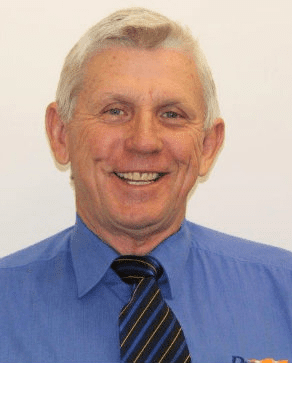
Peter McPherson
Mr MacPherson said cattle included in a deal was often viewed more favourably by banks because it provided a projected cash flow.
“It means an incoming purchaser can walk straight onto a turnkey operation. Vendors who offer their properties bare of livestock often choose to do so because cattle are valuable, and they are loathe to let them go unless they haven’t the room for them.”
Last month, Mr MacPherson sold Pentland’s Carmichael Station to a local family operation for more than $11 million bare ($512/ha).
Owned by Hewitt Pastoral Enterprises, the 21,500ha of well grassed breeding country is located three hours south west of Charters Towers in north Queensland, and has an estimated carrying capacity of 3000 adult equivalents.
Mr MacPherson said the Hewitts moved their cattle off Carmichael to another holding, Springfield Station at Mount Surprise, which they purchased 18 months ago, where they are building breeder numbers.
He said properties sold bare are not necessarily considered ‘less attractive’.
“While it may rule-out some potential purchasers, most are looking at the opportunity – a good body of grass to increase their heifers or breeders.”
“Some have too many cattle, especially those who thought they missed out on a wet season, and are now looking for a home for a couple of thousand head.”
Mr MacPherson said for the most part, bare purchases in Queensland were being secured by existing family operators who are expanding.
“They have never been in a stronger position and there is a good appetite for breeder country which is in short supply. However, blocks offered with cattle are a definitely a drawcard,” he said.
Stephen Cameron, HTW
Toowoomba-based Herron Todd White valuer Stephen Cameron said more landholders were opting to market their properties under auction terms due to strong buyer competition.
“Generally, this involves selling on a bare basis in order to maximise their buyer profile. Afterwards, cattle may be sold to the successful purchaser.”
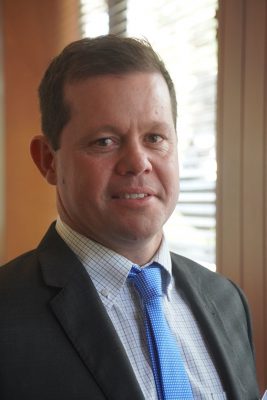
Stephen Cameron HTW
In southern Queensland and northern New South Wales, Mr Cameron said a large percentage of transactions were being made on a bare basis, partly due to the smaller scale of the holdings and distance from markets.
“However, with the present difficulties in securing livestock and increased costs (including cartage), the potential to buy an asset ‘walk-in, walk-out’ is often viewed more favourably.”
With the broad improvement in seasonal conditions, Mr Cameron said ‘grass purchases’ based on maintaining a core herd have made way for building larger-scale beef operations.
“The ability to secure an asset that converts grass into kilograms of beef (dollars) from date of possession is an advantage.”
Mr Cameron is aware of recent transactions along these lines including cattle in the Carnarvon Ranges and western Queensland.
“Some of these sales have been off-market, with an underlying decision by the vendor to sell the asset ‘WIWO’, while still achieving sound values for the livestock component.”
“Cattle included in a sale offer numerous advantages for the buyer, including an immediate cash flow. It reduces the variables which in turn limits the risks.”
Andrew McCallum, Nutrien Harcourts GDL
Dalby-based Andrew McCallum from Nutrien Harcourts GDL said many southern Queensland grazing properties in his region were offered for sale bare, with sometimes the option available to purchase stock separately.
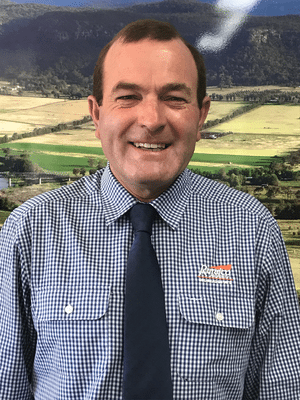
Andrew McCallum
“After a property is auctioned or sold, the successful purchaser (in some circumstances) is given the ‘first right of refusal’ to purchase the stock being offered by the vendor through the agent.”
“These animals are not included in the actual sale price of the property. The value is negotiated afterwards,” he said.
Mr McCallum said offering livestock afterwards can provide more flexibility around the process for both parties.
“The flexibility attracts both sets of purchasers – those who are seeking cattle to stock the purchase and those who already have the ability to stock the property. The first right of refusal is generally, clearly outlined by the agent in the advertisements and other marketing material in the sales campaign.”
He said offering livestock afterwards has the potential to attract a larger buyer pool because it gives purchasers options.
“Not every producer is seeking a stocked property. Many potential purchasers with cattle are looking at country for expansion or for grass.”
Mr McCallum said individual situations and circumstances dictated whether the successful purchaser secures the available livestock.
“A good number of buyers already have the numbers to stock a new property. Conversely, there are other producers looking to expand their operations and it suits them to buy the stock that are already adjusted to the local climate and conditions, and do well.”
Mr McCallum said a good percentage of buyers and their financial institutions preferred a property transaction involving cattle.
“This means the purchaser doesn’t have to find the further capital outlay to run the operation. They have paid for it all on the day of sale, and this can be easier to budget against.”
He said as an agent, he looked at the target market, considered clients preferences and individual situations, as well as liaising with his company livestock team to ascertain the best way forward for clients.
“Over the last 20 years, an increasing number of properties have been offered bare of stock. However, in my opinion it is not necessarily a trend, it is directly dependent on the current markets and the seasons, with individual situations and preferences of clients at the time.”
